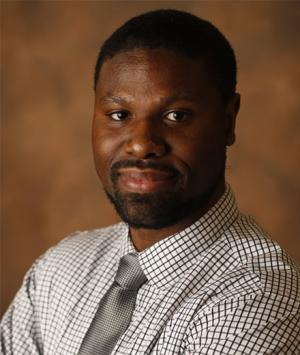Colloquium
Upcoming Colloquium
Advancing Stellar Activity and Binary Evolution Science with Rapidly Rotating RGB Stars
Dr. Don Dixon, Vanderbilt University
April 21, 2025
11:00am in HSCI-105

The rotational dependence of dynamo-powered stellar activity has been thoroughly investigated for main-sequence stars, but much less so for stars evolved onto the Red Giant Branch (RGB). In addition to being bigger and brighter, giant stars are generally observed to have negligible rotation rates compared to main-sequence stars and consequently tend to have comparatively weak dynamo action and global magnetic fields. This is generally expected due to angular momentum being carried away by stellar winds before ascending the RGB, but if a companion star orbits in close enough proximity, an RGB star can be spun up by tidal synchronization or mass accretion events. As a result, rotationally active giants are unique systems for furthering the understanding of evolved stellar activity and binary evolution processes that impart angular momentum for rotational spin-up. To characterize giant branch rotational activity, we derive an empirical rotation-activity relation using projected rotational velocities (vsini) and excess near-ultraviolet emission produced by magnetic heating of the chromosphere (Eζ(NUV)). We find our relation is similar in structure to those fitted to main-sequence stars, which may suggest a similar dynamo mechanism. Additionally, we find that the most active giants have near-ultraviolet emission that exceeds expectations given their rotation rates and that they are all in synchronized binaries with orbital periods < 20 days. Lastly, we find tentative evidence that giants approaching breakup rotational velocities are likely formed from planetary engulfment or stellar merger processes, both of which are still not well understood.

About the Colloquium
The Colloquium is a unique opportunity for students to learn about new developments in physics and what physicists do after they graduate. Hosted by the Physics and Astronomy Department at California State University, Long Beach, the weekly meetings invite guests from universities, research laboratories, and industry to present and discuss current topics in physics. All students are encouraged to attend for a well-rounded experience and training in physics.
Colloquium Coordinator
For information and suggestions about the colloquium please contact the colloquium coordinator:
Dr. Zoltan Papp
Zoltan.Papp@csulb.edu
Schedule
| Date | Title | Speaker and Affiliation |
|---|---|---|
| April 21, 2025 | Advancing Stellar Activity and Binary Evolution Science with Rapidly Rotating RGB Stars | Dr. Don Dixon, Vanderbilt University |
| April 28, 2025 | (topic: condensed matter theory) | Thomas Baker, University of Victoria, Canada |
| May 5, 2025 | Physics Student Research Presentations | Physics Students, CSU Long Beach |
| May 7, 2025 | Physics Student Research Presentations | Physics Students, CSU Long Beach |
Previous Colloquia
| Date | Title | Speaker and Affiliation |
|---|---|---|
| April 14, 2025 | Distributed Charge Compton Sources - From Nuclear Photonics to Medicine | Dr. C.P.J. Barty, UC Irvine |
| April 7, 2025 | Resurrecting the Past: The Undying Relevance of 19th Century Physics for Stellar Corpses | Dr. Thomas Klaehn, CSU Long Beach |
| March 24, 2025 | Design and construction of a Nitrogen-Vacancy mediated Optical Detection Magnetic Resonance (NV-ODMR) Spectrometer -- aka, a high-density Quantum Sensor Platform | Dr. Karoly Holczer, UCLA |
| March 10, 2025 | Topological semimetals in heavy fermion compounds | Dr. Silke Paschen, Vienna University |
| March 3, 2025 | Illuminating the Dark Sector | Dr. Daniel Diaz, UC San Diego |
| February 24, 2025 | Nontrivial band-topology in dimerized quantum magnets | Dr. Judit Romhanyi, UC Irvine |
| February 17, 2025 | Advances in Hadron Physics from Color-Confining Light-Front Holography: A Novel Nonperturbative Approach to Color Confinement, Hadron Spectroscopy, and Dynamics | Dr. Stanley Brodsky, Stanford University |
| February 10, 2025 | An Overview of AI and Machine Learning Research at the Nevada National Security Sites | Dr. Arnulfo Gonzalez, National Nuclear Security Site, Las Vegas |
| January 27, 2025 | Femtosecond Laser Eye Surgery: The Journey from Discovery to Commercial Products | Dr. Tibor Juhasz, UC Irvine |
| February 3, 2025 | Who’s Afraid of Quantum Interference? | Dr. Matthew Leifer, Chapman University |
The Colloquium Archive has the Colloquia from previous semesters.
Sponsors
We acknowledge with gratitude donations and support from the following present sponsors:
- H.E. and H.B. Miller and Family Endowment
- Benjamin Carter
- American Physical Society
- Anonymous
We also acknowledge with gratitude our past donors: The Forty-Niner Shops, Inc., The Northrop Grumman Foundation, Sandra Dana, Anonymous.
If you wish to support the Colloquium, please contact the colloquium coordinator or the department chair. Thank you!





